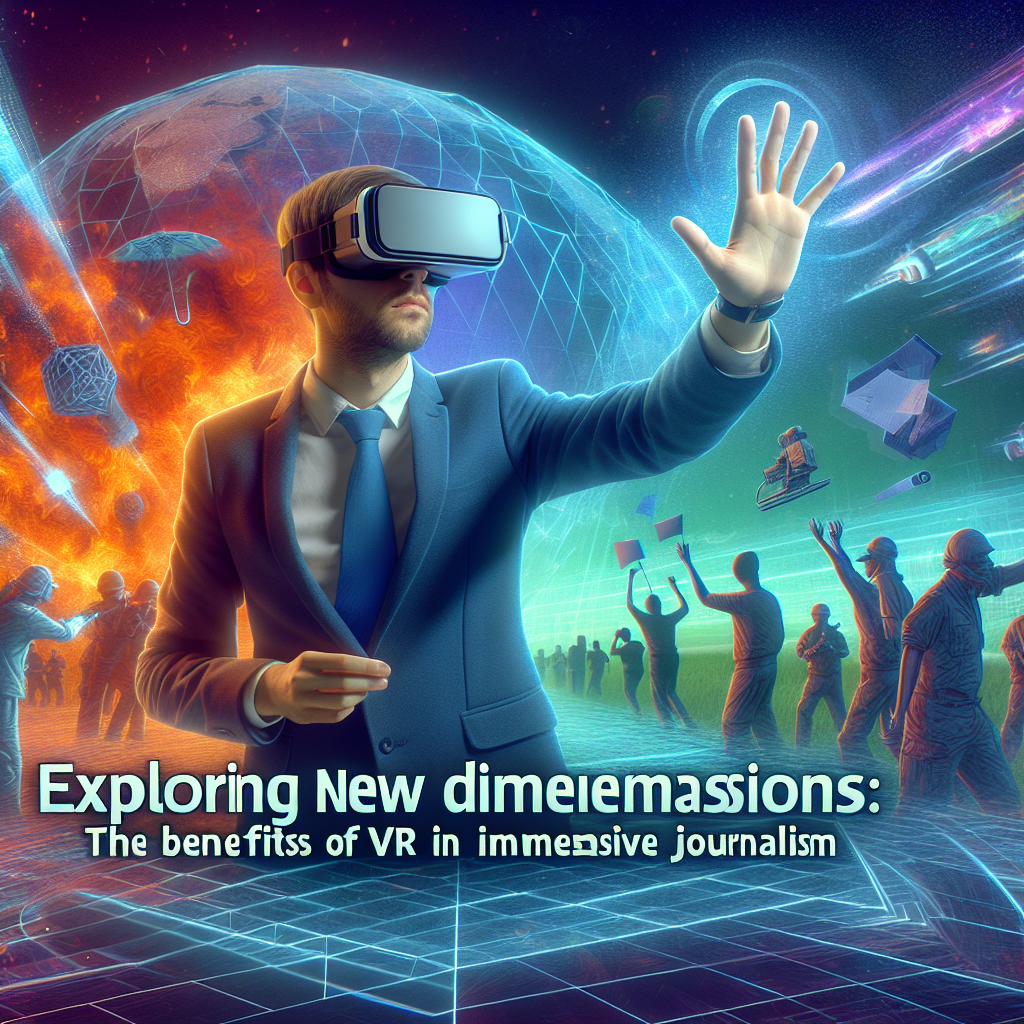Exploring New Dimensions: The Benefits of VR in Immersive Journalism
Virtual Reality (VR) technology has been making waves in various industries, and one field that has been particularly impacted is journalism. With the rise of VR, journalists now have the ability to transport their audience to the heart of a story and provide a truly immersive experience. This innovative approach to storytelling has the potential to revolutionize journalism as we know it, opening up new possibilities for engaging and educating audiences in ways never before possible.
The Benefits of VR in Immersive Journalism
1. Immersive experience: VR technology allows journalists to create immersive experiences that bring their stories to life in a way that was not possible before. By putting on a VR headset, viewers are transported to the scene of the story, allowing them to see, hear, and feel what it’s like to be there. This level of immersion can help audiences better understand and connect with the issues being covered, making the storytelling experience more impactful.
2. Increased engagement: Traditional journalism often struggles to capture and hold the attention of modern audiences who are bombarded with information from various sources. VR journalism offers a unique way to capture and hold the attention of viewers by providing an interactive and engaging experience. By allowing viewers to explore a story in their own way, VR journalism encourages active participation and can lead to increased viewer engagement.
3. Authenticity and empathy: VR journalism has the power to evoke empathy in viewers by allowing them to see a story from a perspective that is not their own. By immersing viewers in the shoes of the subjects of a story, VR journalism can help create a deeper understanding and connection between the audience and the issues being covered. This increased sense of authenticity can help build trust between journalists and their audience, leading to more impactful storytelling.
4. Real-time storytelling: VR technology also offers journalists the ability to cover breaking news stories in real time in a way that traditional journalism cannot. By using VR cameras and live streaming technology, journalists can provide viewers with an up-close and personal look at events as they unfold. This real-time storytelling can help viewers feel more connected to the news, providing them with a sense of immediacy and urgency that traditional journalism often lacks.
5. Educational opportunities: VR journalism opens up new opportunities for education and learning by allowing viewers to explore complex topics in a more interactive and engaging way. By immersing viewers in a story, journalists can help them better understand and retain information, making the learning process more effective. This can be particularly impactful for stories that involve complex data or scientific concepts that may be difficult to convey through traditional means.
6. Access to inaccessible places: VR technology can also provide viewers with access to places that may be difficult or impossible to visit in person. This can be particularly valuable for stories that involve remote locations, dangerous environments, or other challenging circumstances. By using VR cameras, journalists can bring viewers to places they may never have the opportunity to visit, allowing them to experience a story in a whole new way.
FAQs
Q: How does VR journalism differ from traditional journalism?
A: VR journalism differs from traditional journalism in that it provides a more immersive and interactive experience for viewers. Instead of simply reading or watching a story, viewers can actually experience it for themselves in a virtual environment. This level of immersion can help create a deeper connection between the audience and the stories being covered.
Q: What equipment is needed to experience VR journalism?
A: To experience VR journalism, viewers will need a VR headset that is compatible with the content being produced. There are many different VR headsets available on the market, ranging from affordable options like Google Cardboard to more high-end options like the Oculus Rift or HTC Vive. Viewers will also need a compatible smartphone or computer to run the VR content.
Q: Are there any ethical concerns with using VR in journalism?
A: As with any new technology, there are ethical considerations that journalists must take into account when using VR in their reporting. These concerns may include issues of consent, privacy, and manipulation. Journalists must always consider the potential impact of their work on subjects and audiences and ensure that they are using VR technology in a responsible and ethical manner.
Q: How can journalists learn to use VR technology for storytelling?
A: Many journalism schools and organizations now offer training programs and workshops on using VR technology for storytelling. Additionally, there are many online resources available that can help journalists learn the basics of VR production and storytelling. By taking the time to learn and experiment with VR technology, journalists can harness its potential to create more engaging and impactful stories.
In conclusion, VR technology has the potential to revolutionize journalism by providing a more immersive, engaging, and authentic storytelling experience. By harnessing the power of VR, journalists can transport their audience to the heart of a story and provide a truly interactive and impactful experience. As this technology continues to evolve, we can expect to see even more innovative and groundbreaking uses of VR in journalism, opening up new dimensions of storytelling and connecting audiences in ways never before possible.
